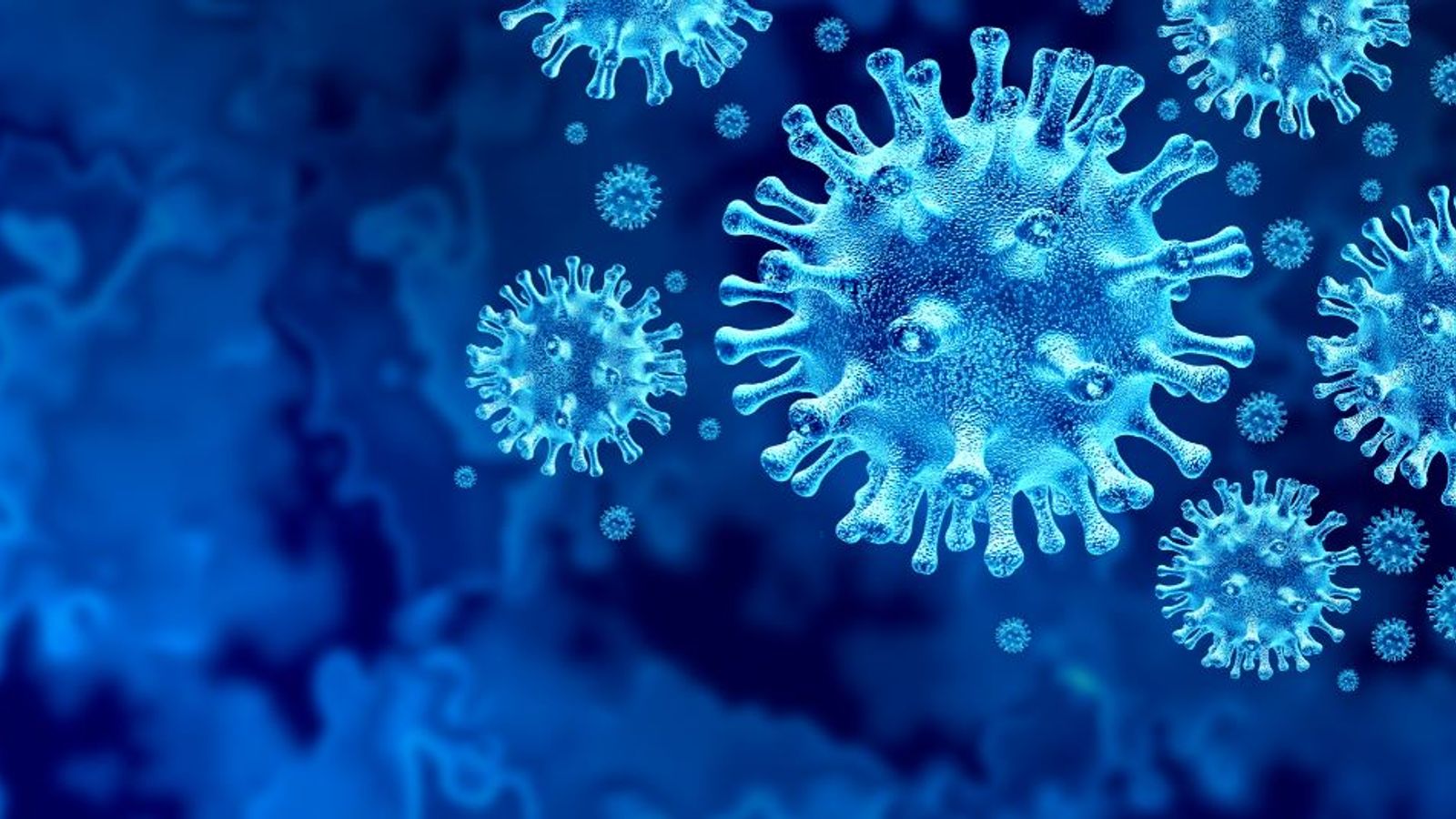Scientists have identified six distinct types of COVID-19 – each with a specific collection of symptoms – in a breakthrough that could help doctors predict which patients are most at risk.
The different forms of the disease are believed to determine its severity among those infected – and whether they are likely to need respiratory support in hospital.
Those behind the study, led by researchers from King’s College London, say it will have major implications on treatment decisions during a potential second wave of coronavirus and could “save lives”.
Although a continuous cough, fever and loss of smell are usually highlighted as the three key symptoms of the illness, data gathered from around 1,600 users of the COVID Symptom Study app in the UK and US shows that people can experience a wide range of different effects.
These can include headaches, muscle pains, fatigue, diarrhoea, confusion, loss of appetite, shortness of breath and more.
And researchers concluded that which of the six main cluster of symptoms each infected person suffered tended to indicate how quickly the disease would progress and how ill they were likely to get.
They said patients’ outcomes varied significantly – from mild flu-like symptoms or a simple rash to severe disease or death.
The six clusters of symptoms – which emerged at similar points in the disease’s progression – were identified by the researchers along with the likely severity that each tended to correspond with.
And the team behind the study said that while some of the listed symptoms – such as confusion, abdominal pain and shortness of breath – had not been widely linked to COVID-19, they were hallmarks of its most severe forms.
They presented the six distinct clusters – or “types” of COVID-19 – as follows:
- ‘Flu-like’ with no fever – Headache, loss of smell, muscle pains, cough, sore throat, chest pain, no fever.
- ‘Flu-like’ with fever – Headache, loss of smell, cough, sore throat, hoarseness, fever, loss of appetite.
- Gastrointestinal – Headache, loss of smell, loss of appetite, diarrhoea, sore throat, chest pain, no cough.
- Severe level one, fatigue – Headache, loss of smell, cough, fever, hoarseness, chest pain, fatigue.
- Severe level two, confusion – Headache, loss of smell, loss of appetite, cough, fever, hoarseness, sore throat, chest pain, fatigue, confusion, muscle pain.
- Severe level three, abdominal and respiratory – Headache, loss of smell, loss of appetite, cough, fever, hoarseness, sore throat, chest pain, fatigue, confusion, muscle pain, shortness of breath, diarrhoea, abdominal pain.
It was discovered that only 1.5% of people with cluster 1, 4.4% of people with cluster 2 and 3.3% of people with cluster 3 required breathing support.
:: Listen to the Daily podcast on Apple Podcasts, Google Podcasts, Spotify, Spreaker
But these figures were 8.6%, 9.9% and 19.8% for clusters 4, 5 and 6 respectively – while nearly half of the patients in cluster 6 ended up in hospital, compared with just 16% of those in cluster 1.
The researchers said that, in general, people with clusters 4, 5 or 6 tended to be older and frailer, and were more likely to be overweight and have pre-existing conditions such as diabetes or lung disease than those with type 1, 2 or 3.
Having identified the different clusters, they then combined information about patients’ age, sex, BMI and pre-existing conditions with symptoms each gathered over just five days from the onset of the illness.
This allowed them to devise a model which they say predicts more accurately – and, crucially, earlier – which cluster each patient falls into and how likely they are to require hospital treatment and breathing support.
Dr Claire Steves, from King’s College London, said: “These findings have important implications for care and monitoring of people who are most vulnerable to severe COVID-19.
“If you can predict who these people are at day five, you have time to give them support and early interventions such as monitoring blood oxygen and sugar levels, and ensuring they are properly hydrated – simple care that could be given at home, preventing hospitalisations and saving lives.”
And Sebastien Ourselin, professor of healthcare engineering at King’s College London and senior author of the study, said the research was having “a profound impact on our understanding of the extent and impact of COVID-19”.
Professor Tim Spector added that the findings showed the importance of people getting into the habit of using the app daily, “helping us to stay ahead of any local hotspots or a second wave of infections”.
